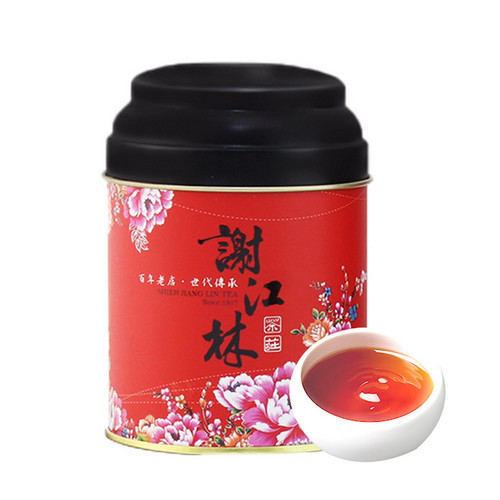A temple-like government office set up in 1047 during the Song Dynasty to manage the tea-horse trade still survives in Mingshan, one of the eight counties under Ya'an. At the time, some 7,500 tons of tea went to Tibetan inhabited areas from Sichuan every year, mostly via Ya'an. The tea was exchanged for horses during the ancient dynasties. Normally a horse was traded for 50 kilograms of tea but sometimes, as in the Reign of Yuanfeng (1076-85) of the Song Dynasty, for just 20 kilograms of tea. The Office of the Tea-Horse Department in Mingshan could handle 2,000 traders a day.
Dark Tea (Hei Cha) is an unique type of tea made by post fermentation with a more than 400 years history. In China, it is usually called Border-Sale Tea (Bian Xiao Cha), literally, tea sold on borders as it is commonly compressed into forms of bricks and sold in western minority areas of China. Its name comes from the color of dried tea leaves which results from old coarse raw materials and long time stacking fermentation during its production. According to the producing areas and production process, it can be divided into Hunan Hei Cha, Hubei Hei Cha, Sichuan Route Tea, Diangui Hei Cha and etc. For people who like delicate green tea, it is hard to get used to the strong and unique taste of Hei Cha at once while if they stick to drinking it, they would fall in love with the unique mellow flavor of dark tea.
Dark tea is commonly known to have the function of aiding digestion and revitalizing energy, and it has been a daily drink of the Tibetans for more than a thousand years. There is a saying that “Tibetans can live without food for three days, but cannot go without tea for a day.” In the Tibetan plateau where fresh fruit and vegetable are scare, meat, butter and barley are the staple food. Drinking fat-dissolving drink tea is not only a traditional custom but also a physical need.
Dark tea is the essential ingredient of Tibetan butter tea, the indispensable beverage of everyday life for the Tibetans. However, dark tea was not originally produced in Tibet, as its weather and geographical condition are not suitable for growing tea plants.The dark tea drunk be Tibetans, also known as Tibetan tea, is a unique dark tea that comes from Sichuan’s Yaan. The place was the first stop over the Ancient Tea-Horse Road, to carry Yaan’s tea to Lijiang in Yunnan, Kangding in Xikang, and even further to India.Wrapped in cloth sack and kept in bamboo holders, the compressed tea bricks were once used as currency to trade horses and other things.
This is fine bud grade. It steeps up medium-bodied with buoyant, fresh, clean, sweet earthy notes in the aroma and taste. The woody malt sits heavily on the palate and a wet wood hui gan fills the throat leaving a lingering dark, nutty flavor in the mouth. You may infuse the same leaves many times. A delicious and unique tea. Its simple, dark, brooding demeanor gives it an intriguing and exotic sense of mystery and adventure.
Brewing Guide: To prepare dark tea, rinse with warm water before brewing. Water temperature is 100° C. Steep to taste; the range of brew time is wide. You may choose several short steeps lasting of a couple of minutes or you may allow the leaves to steep for much longer. This will yield a stronger brew; unlike other teas, dark tea will not get bitter when steeped longer.
For your first steep, we suggest a 30-50 second steep. For the second steep 10 seconds is best, simply add 5 seconds to each of your next steeps. This will allow you to experience the full range of tastes the leaves have to offer.


















